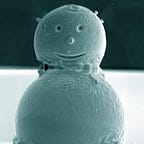The gravitational wave memory of spacetime
A research paper titled “Detecting Gravitational-Wave Memory with LIGO: Implications of GW150914” shows that the Laser Interferometer Gravitational-Wave Observatory (LIGO) will permit detecting gravitational wave memory: a permanent displacement of spacetime that comes from strong-field, general relativistic effects.
See my review: “Advanced LIGO Gravitational Wave Observatory Could Detect Permanent Memory of Spacetime.”
Summary: Passing gravitational waves from high-energy astrophysical events, such as the fusion of two black holes, stretch and squeeze the fabric of spacetime. After the passage of a gravitational wave, spacetime doesn’t return to exactly the previous geometry, but remains permanently stretched or squeezed by a small amount.
Though the effect, known as “Christodoulou memory,” is too weak to be detected (with current technology) for a single event, the researchers have found ways to study the gravitational wave memory of spacetime by analyzing many gravitational wave signals from different events together.
So here we have permanent traces left from past events in the fabric of spacetime. Individual traces are too weak to detect above a confirmation threshold, but analyzing many traces together — “the coherent summation of an ensemble of subthreshold signals” — can unveil information.
Is this a case of permanent cosmic memory that future scientists could exploit to reconstruct the past and resurrect the dead? Yes, a black hole fusion event releases a little bit more energy than you or I, but perhaps gravitational wave memory is a good place to start.
